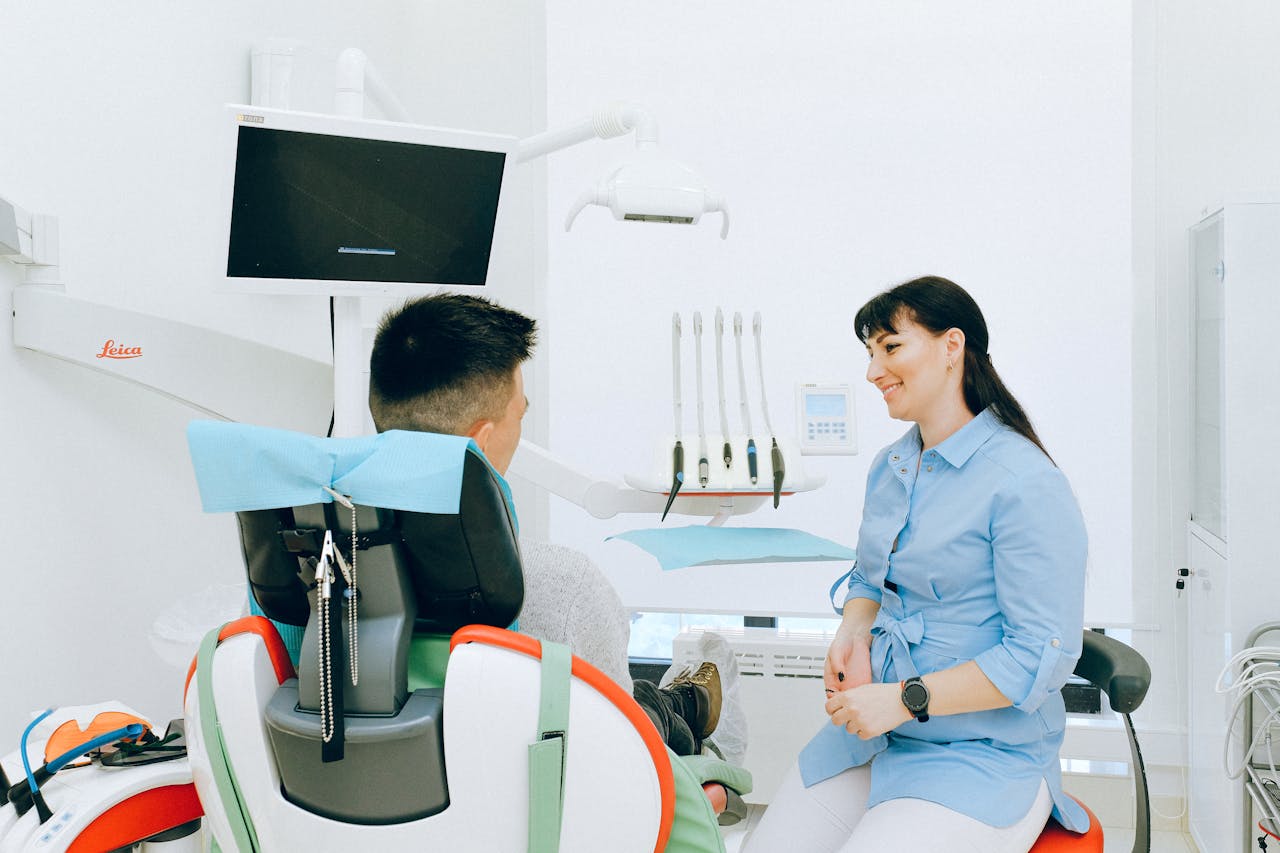Google Paid Ad Strategies For Dental Clinics In Iowa

For Iowa dental practice owners, Google Ads offers a powerful channel to attract new patients actively searching for dental care. With paid search contributing to 35% of business traffic for dental offices, a well-structured campaign can fill your schedule and drive revenue. However, the average dental receptionist books only about 33% of new patient calls, meaning a significant portion of your advertising investment can be lost without a reliable system to capture every lead.
Integrating your Google Ads strategy with a solution like the Arini AI Receptionist Platform ensures every call from a potential patient—whether during business hours or late at night—is answered and converted into a booked appointment.
Key Takeaways
- Dentists don’t need special Google Ads “healthcare certification,” but LSAs do require screening and verification.
- Run both Search ads (service-specific control) and LSAs (pay-per-lead with trust badge) to capture high-intent traffic.
- Iowa averages 4,604 residents per dental practice (vs. ~3,668 U.S.), so precise geo-targeting and location-specific campaigns matter.
- Expect CPCs around $6–$10 for general terms, with emergency and cosmetic keywords higher; set budgets to your target CPA and capacity.
- Track beyond clicks—use call and appointment attribution and model ROI against first-year or lifetime value, not a single visit.
- After-hours demand is real; a 24/7 AI receptionist (e.g., Arini) prevents missed calls and converts more paid leads into bookings.
1. Master Google Ads Certification and Healthcare Compliance
Before your first ad goes live, you must navigate Google’s healthcare advertising requirements. Review Google Ads’ Healthcare & Medicines policies and ensure your ads comply. Dentists typically don’t need a special certification for standard dental services. This involves submitting proof of liability insurance, state business registration, and NPI registration. This isn't a one-time hurdle; your website and ad copy must also comply with healthcare advertising policies, ensuring all claims are truthful and not misleading.
Essential Compliance Steps:
- Complete Google Ads certification in the healthcare vertical.
- Ensure your website has a clear privacy policy and uses secure (HTTPS) data transmission for any patient information.
- Adhere to the American Dental Association’s Principles of Ethics regarding advertising, avoiding guarantees of results or unsubstantiated comparative claims.
- Maintain HIPAA compliance for any forms or tracking that might collect protected health information.
Why It Matters: Without this foundational step, your campaigns will be disapproved, halting your patient acquisition before it starts. Proper compliance builds a trustworthy foundation for all your digital marketing efforts.
2. Choose Between Search Ads and Local Service Ads (LSAs)
Google offers two primary paid advertising models for dentists, each with distinct cost structures and benefits.
Google Search Ads (Pay-Per-Click):
- How it Works: You pay each time a user clicks your ad. Ads appear at the top of Google search results.
- Best For: Practices wanting granular control over keyword targeting, ad copy, and landing pages. Ideal for promoting specific services like “Invisalign in Des Moines” or “Emergency tooth extraction.”
Google Local Service Ads (Pay-Per-Lead):
- How it Works: You pay only when a potential patient contacts you via a phone call or message directly from the ad. These ads appear above even the traditional Search Ads and feature a “Google Verified” or “License verified by Google” badge after a verification process.
- Best For: Practices seeking a more cost-efficient model focused on direct patient contact, with a built-in trust signal from the Google verification badge.
Strategic Recommendation: Many successful Iowa practices run both. Use Search Ads for specific service promotion and brand control, and leverage LSAs for broad, high-intent local searches like “dentist near me,” ensuring you capture every qualified lead.
3. Structure Your Campaigns for Maximum Impact
A messy campaign structure leads to wasted spend and poor performance. Google’s own guidance emphasizes a clear hierarchy for optimal results.
Optimal Campaign Architecture:
- Campaign Level: Separate your campaigns by goal and service type (e.g., “General Dentistry,” “Cosmetic Services,” “Emergency Care”).
- Ad Group Level: Within each campaign, create tightly themed ad groups. For your “General Dentistry” campaign, you might have ad groups like “Teeth Cleaning,” “Dental Checkups,” and “Tooth Fillings.”
- Keyword Level: Populate each ad group with 5-20 highly relevant, specific keywords (e.g., “teeth cleaning Des Moines,” “affordable dental checkup Iowa City”).
Critical Integration: To measure true ROI, you must track which ads lead to actual appointments. The Analytics & Notifications Module from Arini can track calls and appointments booked from your Google Ads, linking your ad spend directly to revenue.
4. Target Iowa’s Unique Market with Precision Geo-Targeting
Iowa’s dental market has a higher patient-to-practice ratio (4,604 residents per practice) than the national average (3,673 residents), making efficient targeting crucial. Don’t waste your budget showing ads to areas you don’t serve.
Geo-Targeting Tactics:
- Radius Targeting: Set a 5-10 mile radius around each of your practice locations in cities like Cedar Rapids, Davenport, or Sioux City.
- City and ZIP Code Targeting: Create specific ad groups or campaigns for your primary service cities to tailor your messaging (e.g., “Top-rated family dentist in Cedar Rapids”).
- Bid Adjustments: Increase your bids by 10-20% for geographic areas that historically convert at a higher rate.
For Multi-Location Practices: If you’re a DSO or group practice, the Integration & Workflow Customization Module allows you to manage a single Google Ads account while automatically routing calls from each city to the correct local office.
5. Conduct Iowa-Specific Keyword Research
Your keyword strategy should be built on what real Iowans are searching for. Use the Google Ads Keyword Planner to find high-intent terms, but focus on local modifiers and service-specific phrases.
High-Value Keyword Categories:
- Emergency Keywords: “emergency dentist Des Moines,” “tooth pain dentist near me,” “24 hour dentist Iowa City.” These have high conversion intent.
- Cosmetic Keywords: “Invisalign cost Cedar Rapids,” “teeth whitening Davenport,” “best cosmetic dentist Iowa.”
- General Service Keywords: “family dentist near me,” “pediatric dentist Sioux City,” “dental cleaning Iowa.”
Negative Keywords are Crucial: To avoid wasted spend, add negative keywords for services you don’t offer (e.g., “oral surgeon,” “dental school”) or for locations outside your service area. As industry expert Adam Gorecki advises, prioritize negative keywords that are “driving cost and volume.”
6. Set a Realistic Budget Based on Iowa Benchmarks
Dental practices typically spend around $900 to $3,800 per month on advertising, with an average of $2,500 per month per location. Your budget should be guided by your patient acquisition cost (PAC) and lifetime value (LTV). The average PAC for dentistry is $374, while the average revenue per patient is approximately $259.
Budgeting Strategy:
- Start Conservatively: Begin with a daily budget of $50-$100 to gather performance data without overspending.
- Calculate Your Break-Even: If your average new patient generates $259 in revenue and your profit margin is 35%, you can afford to spend up to $90 per acquisition to break even. This informs your target cost-per-acquisition (CPA) in your bidding strategy.
- Use Smart Bidding: Once you have conversion data, leverage Google’s automated bidding strategies like Target CPA to let its AI optimize for your desired cost-per-lead.
7. Write Ad Copy That Converts Iowans into Patients
Your ad is your first impression. It must speak directly to the searcher’s intent and offer a compelling reason to click.
High-Converting Ad Copy Elements:
- Highlight Urgency & Availability: “Same-Day Appointments Available,” “Open Late for Your Convenience,” “Emergency Dental Care Now.”
- Address Pain Points: “Suffering from Tooth Pain? Get Relief Today.”
- Promote Trust & Credentials: “Google Verified Dentist,” “Family-Owned Since 2005,” “Accepting New Patients.”
- Include a Clear Call-to-Action (CTA): “Call Now to Book,” “Get Your Free Consultation,” “Visit Our Office Today.”
Leverage Ad Extensions: Use call extensions, location extensions, and sitelink extensions to provide more information and increase your ad’s real estate on the search results page, which can boost your click-through rate (CTR).
8. Build a Landing Page That Turns Clicks into Appointments
A click is only valuable if it leads to a conversion. A poorly designed landing page can undo all your ad spend. Your landing page must be mobile-responsive, load quickly, and have a single, clear goal: getting the visitor to book an appointment.
Essential Landing Page Components:
- Clear, Compelling Headline: Restate the user’s search intent (e.g., “Affordable Dental Implants in Des Moines”).
- Strong, Visible Call-to-Action: A bright, prominent button that says “Book Your Appointment Online” or “Call Now.”
- Trust Signals: Patient testimonials, before-and-after photos (with consent), and professional association badges.
- Address Common Objections: Briefly mention insurance acceptance and financing options.
Reduce Friction: The Patient FAQ & Communication Module can be embedded on your landing page to answer common questions about insurance or billing in real-time, preventing visitors from bouncing before they convert.
9. Implement Robust Tracking and Measure True ROI
If you can’t measure it, you can’t manage it. You need to track more than just clicks; you need to track which clicks turn into actual, scheduled appointments.
Tracking Setup:
- Conversion Tracking: Install the Google Ads conversion tag on your website’s “Thank You” page after a form submission.
- Call Tracking: Use a dedicated call tracking number in your ads to measure phone call conversions. This is critical, as many patients prefer to call.
- PMS Integration: This is where Arini adds immense value. By integrating with your practice management software, the Call Answering & Scheduling Module can track every call from a Google ad and attribute a booked appointment directly back to the specific campaign and keyword, giving you a complete ROI picture.
Key Metrics to Monitor:
- Cost-per-acquisition (CPA)
- Lead-to-appointment conversion rate
- Quality Score (aim for 7+)
- Search impression share
10. Optimize for After-Hours and Weekend Leads
A huge portion of your potential patients will be searching for a dentist outside your normal business hours. In fact, most dental PPC campaigns are mismanaged, and a common flaw is failing to capture this after-hours traffic.
The Solution: Your Google Ads will continue to run 24/7, but your office is closed. This is a major missed opportunity. An AI receptionist like Arini’s 24/7 call answering for dental practices ensures that every call, even at 2 AM on a Sunday, is answered by a professional voice, gathers the patient’s information, and books the appointment directly into your calendar. This turns a simple lead into a confirmed booking while your staff rests.
Frequently Asked Questions
Q: What is the average cost-per-click for dental keywords in Iowa?
A: While exact Iowa-specific CPCs are hard to pinpoint, national averages for dental keywords can range from $2 to $15. Costs are influenced by competition, keyword intent (e.g., “emergency dentist” is more expensive than “dentist”), and your ad’s Quality Score.
Q: How much should a dental practice budget for Google Ads each month?
A: Most dental practices spend an average of $2,500 per month per location, with a typical range of $900 to $3,800. Your budget should be based on your calculated patient acquisition cost and lifetime value.
Q: What is the difference between Google Ads and Google Local Service Ads?
A: Traditional Google Ads (Search) is a pay-per-click model where you pay for every click on your ad. Google Local Service Ads (LSAs) are a pay-per-lead model where you only pay when a potential patient calls or messages you directly from the ad. LSA also requires a verification process and displays a trust badge.
Q: How do I track phone call conversions from Google Ads?
A: You should use a call tracking service that provides a unique forwarding number for your ads. This allows you to see which calls came from your Google Ads. For a complete picture, integrate this with a system that can track if that call turned into a booked appointment in your practice management software.
Q: Can I run Google Ads for multiple dental office locations in Iowa with one account?
A: Yes, absolutely. You can manage multiple locations from a single Google Ads account. You’ll create separate campaigns or ad groups for each location and use geo-targeting to ensure the right ads show to the right audiences. The multi-location dental practice management features in platforms like Arini can help route these location-specific calls correctly.









